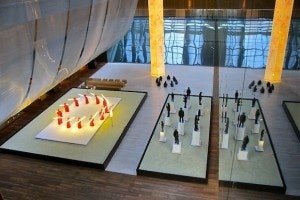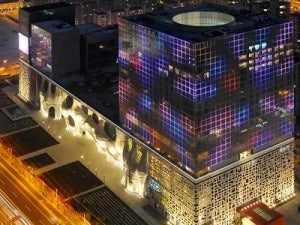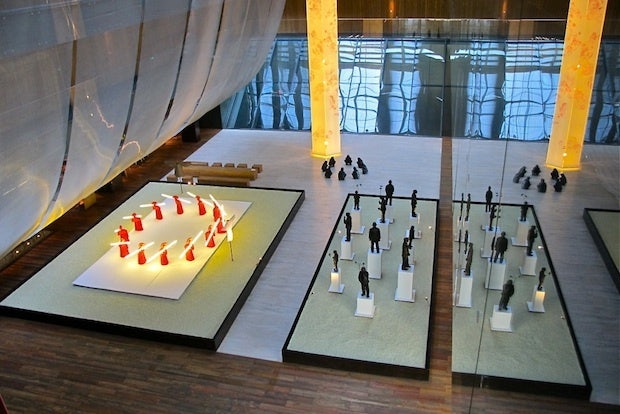Standing Out In Increasingly Crowded Market Takes Culture#

With the number of hotels under construction in China skyrocketing in the last few years, and virtually all of the world’s top chains digging into Beijing and Shanghai for the long haul, one trend that is only picking up steam is that of luxury hotels stocking a nicely curated supply of Chinese art. While few can do opulence quite like Shanghai’s Peace Hotel or the Fairmont Beijing, in an effort to brand themselves as a place for the hip and worldly, boutique hotels like Grace Beijing, The Opposite House, and JIA Shanghai have found that Chinese art can be the missing ingredient.
Aside from trying to stand apart from the competition and plug their cultural sides, there are pragmatic reasons for luxury hoteliers to combine art and accommodations. As Jing Daily has previously noted, a growing number of Chinese business travelers or domestic tourists are opting for experiential high-end hotel stays, centered around eco-friendly getaways, intensive spa treatments and even art tours. Their choice of accommodations is also evolving, with more looking not only to five-star multinational hotel brands but to small boutique luxury hotels outside of major cities, among them Naked Retreats near Shanghai, the Zhouzhuang Blossom Hill Boutique Hotel near Suzhou, and HOMA Chateau near Guilin. Increasingly, as interest in China's art scene rises among hotel guests in China's largest cities, the art on show continues to evolve from the typical mass-produced watercolor to exhibitions featuring top artists, while dedicated curators offer well-organized art tours, and in some cases run full-fledged galleries within the hotel.

As CNNGo writes this week, one of the latest major hotel chains to stock up on top Chinese art is Jumeirah Himalayas Hotel Shanghai -- currently the only China outpost for the Dubai-based giant -- which recently launched what it's billing as "China's first lobby art tour program." Featuring more than 40 works of modern and contemporary Chinese art, the self-guided audio tour showcases rare pieces like Chen Yifei's "Portrait of Chairman Mao" and "Portrait of Iron-Crutch Li" by Qi Baishi -- one of the most popular artists among China's high-powered wealthy new collectors. Most of the works on show belong to Jumeirah Shanghai owner and art collector Dai Zhikang. But the Jumeirah Shanghai is by no means the only hotel promoting its art collection:
Hotel Indigo Shanghai, which opened in December 2010 on the South Bund, operates an “Art at Indigo” project. The InterContinental brand reels in a Shanghai-based young artist community, YISI Art Saloon, to curate a new art show every three months at the public space.
Homa Chateau, a 46-room hotel in Guilin, stands inside a 5.5-square-kilometer, RMB 700 million park, which is filled with 200 artworks from more than 100 artists.
Upmarket business hotels are also joining the show. The Langham Place near Beijing Capital Airport has wowed the local media with its massive art collection.
The 372-room property houses 40 artworks, plus another 30 in its private art gallery, which occupies about 30 square meters. The management team refreshes the collection every three months.
“If I could choose my hotel while traveling -- either for business or leisure -- I’d prefer to check in to an artistic hotel,” said Shanghainese traveler Peggy Xu.

Though the hotel-plus-art trend continues to gain strength, it will remain niche for quite some time. However, the hotels themselves likely see this as a positive, betting that it will consistently attract new guests as China's art-lover demographic gradually increases in the years ahead. This will become particularly true as more of these budding art aficionados tire of huge international chains and "go experiential." As Jenny Lo of marketing consultancy CatchOn told CNNGo, “When I pay to stay in a hotel, I am also paying for an experience different than home, so I would like to see something different, and I can bring home some stories as well."
Given that hotels can keep their art standards high, offering works and well-designed exhibitions that guests can't find elsewhere, they may find themselves able to draw guests even as major international five-star hotels find it more difficult to stand apart from the competition.
